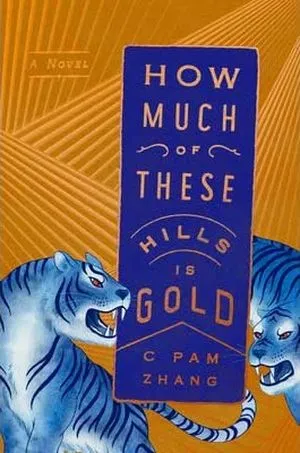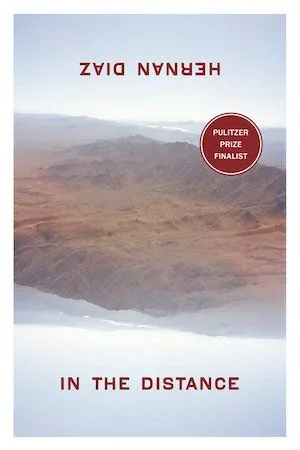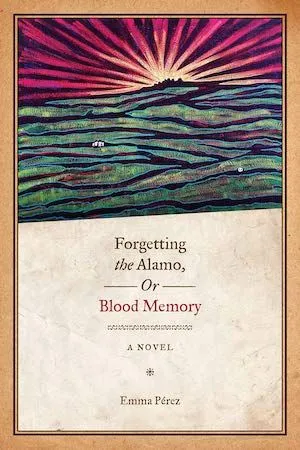
Weird Westerns Explained
What are weird westerns? There are classic westerns, sure — those tales of the U.S. American “frontier” that so often pit gunslinging outlaws against a variety of forces. There are also more contemporary westerns, which untether the genre from a specific era or even location, keeping the vaguely inhospitable landscape and the lone-wolf figure of the cowpoke (yes, this is one gender-neutral term to describe that 10-gallon hat–wearing, gun-toting, horse-riding figure that dominates the horizon in the western genre). But what about weird westerns?
Defining Weird Westerns
Put simply, weird westerns are a merger of westerns and weird fiction. Think: westerns plus monsters, supernatural phenomena, or outer space (among other “weird” elements).
As Anna Bogutskaya points out in her essay “Where to Begin with the Weird West?” the term has its roots in the 1972 DC Comics anthology Weird Western Tales even though the genre-bending tendency for western mash-ups can be traced back at least a few decades prior to that. Up until recently, the term has most frequently been used to talk about cinema, which is ironic given its roots in print media. Before I go any further, let’s pause to think about westerns and weird fiction.
If you’re familiar with westerns (as a genre) you probably know the genre has its roots in U.S. American histories of westward expansion. Conventionally, they tend to feature archetypal characters (almost all male: cowboys, lawmen, outlaws, etc.) moving through a vast frontier that is alternately empty, antagonistic, or lawless. There’s a lot more to westerns than this, and a lot of interesting work has been done in the genre that’s worth paying attention to. But hopefully you get my drift: it’s the rogue cowpoke roving about on that trusty horse, six-shooter always within reach as the west is gradually populated by settler colonists.
Then there’s weird fiction. As a sub-genre of speculative fiction, weird fiction features supernatural elements — whether characters, events, or settings — but isn’t easily classified. It’s famously hard to pin down. Generally speaking, in addition to the supernatural the genre often (but not necessarily) includes elements of dark fantasy or horror. Since weird fiction is notoriously hard to define, that complicates matters.
Regardless, weird westerns still feature that familiar setting or those familiar characters (sometimes both), but there’s also some “weird” stuff in the mix. For instance, in Stephen King’s Dark Tower series you have Roland Deschain, a gunslinging character who resembles the archetypal cowpoke…but you also have strong elements of dark fantasy and horror intermingled with his quest for the mythical tower that connects all the universes.
Different Types of Weird Westerns
In his Encyclopedia of Weird Westerns, Paul Green points out that the “weird” of “weird westerns” isn’t meant to describe things that are simply rare or unusual. Instead, it’s meant to describe westerns that, in essence, are genre mash-ups. Westerns that include, for instance, zombies or aliens. To that end, Green outlines five main types of weird westerns: weird menace westerns, science fiction westerns, space westerns, steampunk westerns, and weird western romances.
Are these the only categories for weird westerns? Not necessarily. However, since Green was one of the first people to put this down in print in this manner, they’re fairly foundational for how this sub-genre is understood (broadly speaking).
In essence, the weird western brings together genre conventions of westerns with the trappings of other genres, especially horror, science fiction, fantasy, and/or romance (although in the case of romance, there has to be more than just adventurous bedroom antics to satisfy the “weird” of weird westerns).
How Understandings of Weird Westerns are Growing
The conversation has been gaining momentum in exciting ways over the past decade and a half. In part, this is because of some really interesting critical publications about weird westerns. The first is Green’s 2009 book Encyclopedia of Weird Westerns (the second edition was released in 2016), which catalogues weird westerns across literature and comics, film and television, and video games and RPGs.
A few years later (in 2012, to be exact) came an edited collection of essays called Undead in the West (and one year after that: Undead in the West 2) which does some really interesting work to think about how weird westerns take on some of the most dominant themes and tropes that characterize the (non-weird) western as a genre.
Most recently, in 2020 Weird Westerns: Race, Gender, Genre was published. The essays in this collection delve into some rich conversations around race and gender (hence the subtitle) and show how far the thought on this sub-genre has come.
Some Reads to Get You Started
There’s so much to read if you’re in the market for a weird western. You’ll find Stephen King’s Dark Tower series and Cormac McCarthy’s Blood Meridian on most lists of weird westerns. But if you’re looking for something more recent, here are three that I’d recommend taking with you into the sunset.

How Much of These Hills is Gold by C Pam Zhang
Longlisted for the Booker Prize, this starkly beautiful novel follows two siblings, Lucy and Sam, in the aftermath of their father’s death. In a nod to Faulkner’s As I Lay Dying, Lucy and Sam carry their father’s decaying remains with them across the harsh western setting, searching for a home for his body and belonging for themselves. Zhang’s weird western features ghosts on the wind, tiger prints in the dirt, and a gender-bending interpretation of the cowboy archetype. Most of all, it’s a riveting story written by a masterful storyteller.

In the Distance by Hernan Diaz
In the Distance, which was a Pulitzer Prize finalist, features a young Swedish immigrant who has been separated from his brother on their journey to U.S. America. As the boy travels east against the wagon trains of settler colonists expanding ever westward, he grows…and grows. In fact, he never stops growing, becoming a legendary behemoth whose reputation is at odds with his quiet nature. It’s a fascinating book, made all the more compelling by Diaz’s powerful prose and captivating characters.

Forgetting the Alamo, or, Blood Memory by Emma Perez
Perez’s novel didn’t get the kind of attention Zhang’s and Diaz’s works did, but it’s worth the read nevertheless. It follows Micaela, a Tejana teenager whose nonconformity to gender expectations sets the scene for her journey into adulthood. The colonization of what is now Texas — especially the events culminating in the Battle of San Jacinto — provides the backdrop for Perez’s haunted weird western. Forgetting the Alamo is one part western, one part ghost story, and one part revenge tale.
If you’re interested in weird western comics, check out The Weird Wild West in Comics for a few solid recommendations!






